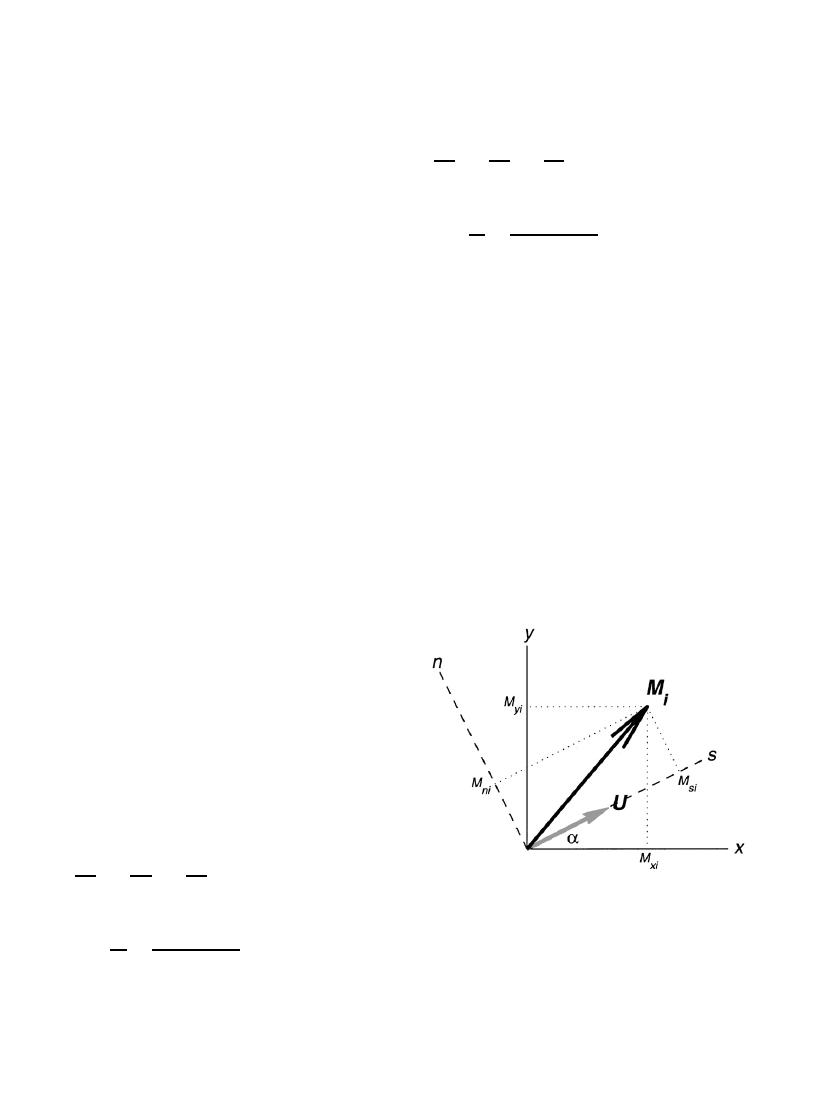
J.L. Hench et al. / Continental Shelf Research 22 (2002) 26152631
2628
for inlets based on a dynamical analysis. The four
qV
qV
qV
V
U
fU
idealized inlets analyzed here provide baseline
qy |ffl{zffl}
qt
qx
|{z} |fflfflfflfflfflfflfflfflfflfflfflfflffl{zfflfflfflfflfflfflfflfflfflfflfflfflffl} M
cases for the dynamics one might expect at natural
y3
My1
My2
inlets.
pffiffiffiffiffiffiffiffiffiffiffiffiffiffiffiffiffiffi!
Cf U 2 V 2
qZ
g
V 0:
A:2
H
qy
|fflffl{zfflffl} |fflfflfflfflfflfflfflfflfflfflfflfflfflfflfflfflfflffl{zfflfflfflfflfflfflfflfflfflfflfflfflfflfflfflfflfflffl}
Acknowledgements
My4
My5
We thank two anonymous reviewers for con-
For simplicity, horizontal diffusion terms are
structive comments that significantly improved the
omitted from (A.1) and (A.2) as they did not
manuscript. Funding for this study was provided
contribute significantly to the momentum balances
by the Coastal Inlets Research Program (CIRP) of
of our inlet simulations. At each time-step, we
the Coastal Hydraulics Laboratory, US Army
define a two-dimensional, orthogonal, curvilinear
Corps of Engineers, and the Naval Research
coordinate system such that at each grid point, one
Laboratory, Office of Naval Research (award
coordinate direction points in the along-stream
N00014-97-C-6010).
direction s and the other points in the across-
stream direction n in the right hand sense (see
Fig. 8). The orientation of the s2n coordinate
Appendix A. Rotation of momentum equations into
system relative to the original fixed x2y coordi-
a streamwise-normal coordinate system
nate system, as expressed by the streamline angle
ax; y; t; varies such that at all points the along-
The use of a streamwise-normal coordinate
stream velocity Us is equivalent to the speed, and
system allows a more intuitive physical interpreta-
the across-stream velocity Un 0: From Fig. 8, it
tion for strongly curving flow fields. Gill (1982)
should be apparent that momentum terms in s2n
elegantly derives the steady frictionless form of the
two-dimensional momentum equations directly in
the s2n coordinate system. Here we derive
corresponding transient frictional equations by
transforming the familiar x2y equations. This
transformation is useful in that standard x2y
momentum terms can be used to directly compute
term values in the s2n coordinate system. The
procedure is as follows. U x; y; t; V x; y; t and
Zx; y; t are computed on a fixed x2y grid for all
time steps. The elevation and velocity fields are
used to reconstruct each term in the x2y
momentum equations at each node in the x2y
grid. We designate the individual x2y momentum
terms Mxi and Myi as
qU
qU
qU
V
U
fV
qy |ffl{zffl}
t
qx
qz}
Fig. 8. Definition sketch for the streamline coordinate system.
|{ |fflfflfflfflfflfflfflfflfflfflfflfflffl{zfflfflfflfflfflfflfflfflfflfflfflfflffl} M
At each computational node a s2n coordinate system is
x3
Mx1
Mx2
established and aligned with the local velocity vector U : The
pffiffiffiffiffiffiffiffiffiffiffiffiffiffiffiffiffiffi!
local axes rotation angle is ax; y; t: Mi represents the ith force
Cf U 2 V 2
qZ
or acceleration vector in the momentum equations, with x2y
g
U 0;
A:1
H
qfflx
components Mxi and Myi (e.g. g qZ=qx and g qZ=qy). Mi is
|fflffl{zffl }
|fflfflfflfflfflfflfflfflfflfflfflfflfflfflfflfflfflffl{zfflfflfflfflfflfflfflfflfflfflfflfflfflfflfflfflfflffl}
rotated on to the s2n axes to determine local streamwise and
Mx4
Mx5
normal components Msi and Mni (e.g. g qZ=qs and g qZ=qn).




 Previous Page
Previous Page
